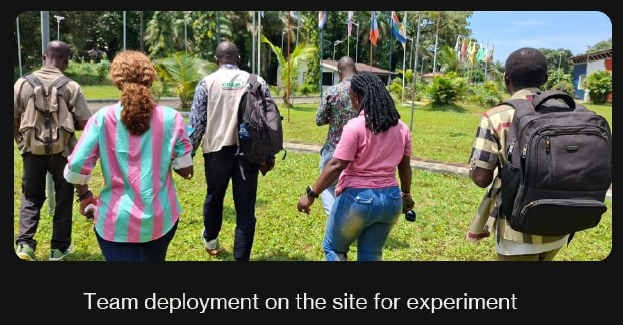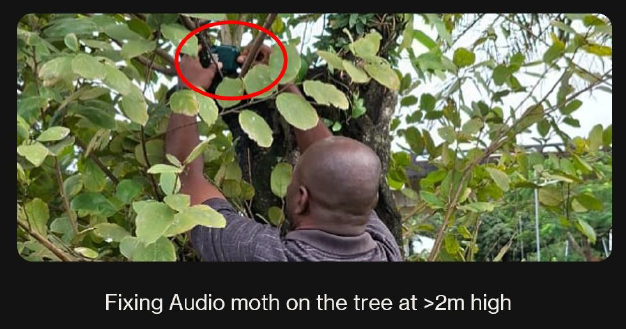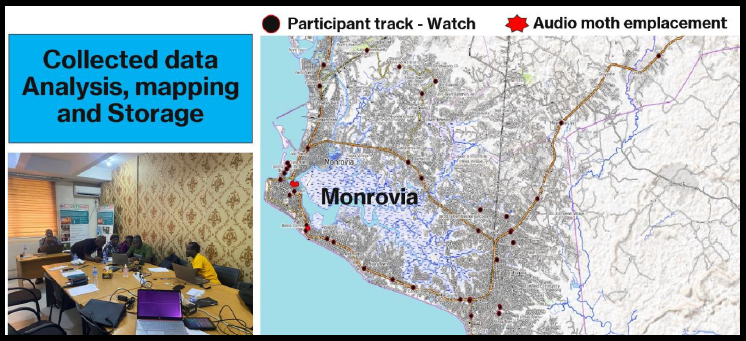

The three-day intensive training on the “One Health Approach to Early Warning and Detection of Marburg Virus & Other Filoviruses in West Africa (Phase 2: Liberia Component)” was successfully held from October 13 to 15, 2025, at the UL-PIRE Office in Monrovia.
The program brought together seven dedicated participants, equipping them with critical skills for integrated disease surveillance. Coordinated by Dr. Stephen B. Kennedy, Principal Investigator and Project Coordinator of the Liberia Marburg Study Team, and led by Dr. Joseph Akoi Bore, Chief Executive Officer of CRAM Guinea, the training achieved its primary goal: strengthening south-south collaboration in disease prevention and surveillance.
To ensure participants’ full engagement, logistical support, including transportation and feeding, was provided throughout the training period. The event emphasized the One Health principle, highlighting the interconnectedness between humans, animals, and the environment in the transmission and control of filoviruses.
Hands-On Learning with Advanced Surveillance Tools
A major highlight of the training was its practical focus on field surveillance technologies. Participants received hands-on instruction in the use of specialized devices, including:
- Audio Moth – for recording bat calls and acoustic activity patterns.
- Garmin GPSMAP 64SX – for precise geographical mapping of surveillance sites.
- GPS Tracking Watches – for monitoring hunter and community movement patterns relative to the landscape.
Dr. Bore shared a case study from Guinea, demonstrating the need for a multi-layered data collection strategy combining human serology, wildlife sampling, and geospatial tracking to identify potential Marburg virus hotspots.
Participants also learned how to configure smartphones and tablets for field data entry using Cobo-collect forms, following detailed Standard Operating Procedures (SOPs) to ensure consistent, high-quality data collection.
Field Protocols and Device Mastery
The training’s practical centerpiece was an intensive session on device setup and data retrieval. Participants mastered the following surveillance protocols:
Audio Moths (AMs)
- Switch device to ‘CUSTOM’ mode and activate via the phone app.
- Secure AMs at a height of ~2 meters and log exact GPS coordinates using Garmin.
- This technique supports acoustic monitoring of bat populations, a key step in early virus detection.
Garmin GPSMAP 64SX
- Use the ‘MARK’ function to record locations of AM deployments, roosts, and human–animal contact points.
- Assign unique identifiers (AM or Watch code, study number) to streamline mapping and data tracking.
GPS Tracking Watches
- Deployed for several days to capture location data every 5 minutes.
- Data synchronized to the central server via the ECOTOPIA smartphone app for spatial analysis of human movement.
Data Retrieval and Management
The final phase of the training focused on data transfer and system programming:
- Configuring AMs using PC software (adjusting sample rate, gain, and recording duration).
- Executing the Audio Moth Data Transfer to Storage Protocol — transferring WAV files from memory cards to a hard drive while retaining only the CONFIG.TXT file for redeployment.
These steps ensure data integrity and operational readiness for continuous surveillance cycles.
Building Capacity for the Future
The training concluded with a Roundtable Discussion and Action Planning session, charting next steps for Liberia’s Marburg and filovirus surveillance.
With this successful capacity-building effort, the UL-PIRE team is now fully equipped to deploy an integrated surveillance system that will:
- Characterize high-risk human–animal interfaces, and
- Generate data to guide national strategies for the prevention and control of Marburg and other filoviruses, particularly in Lofa County, Liberia.



Please Sign in (or Register) to view further.